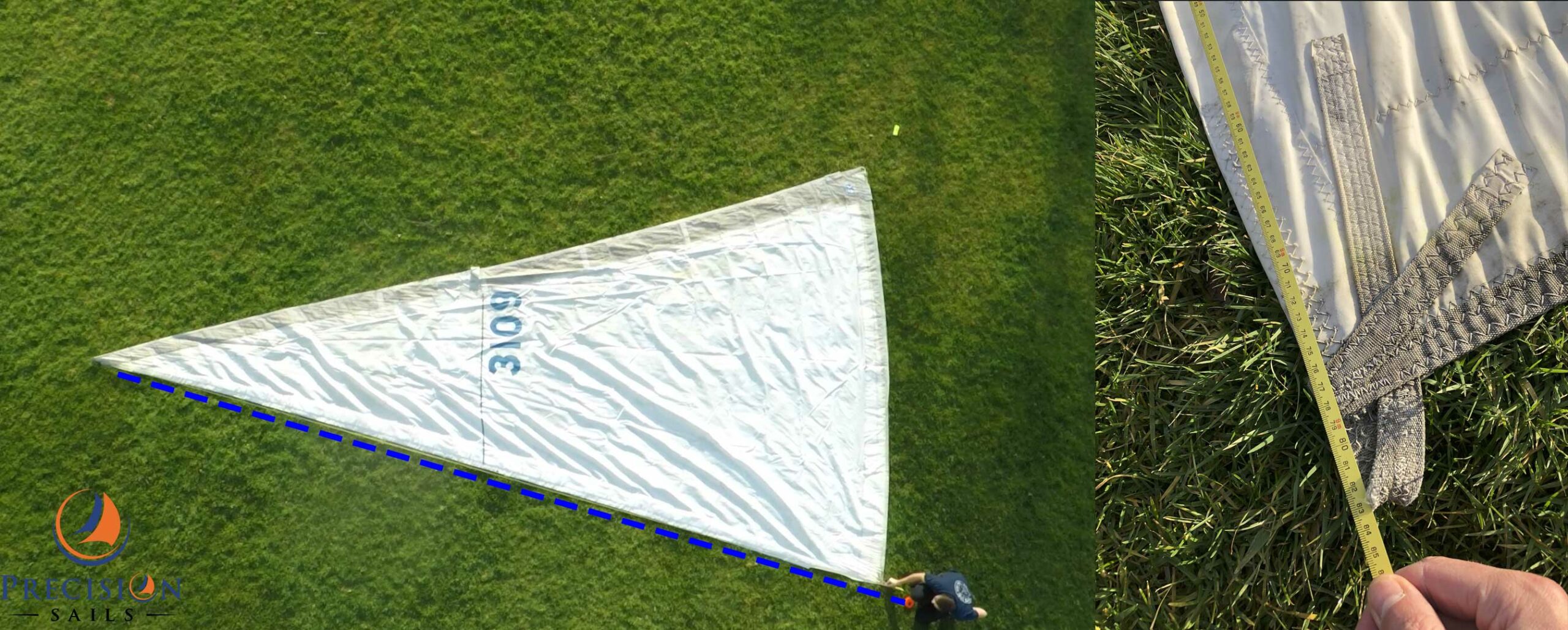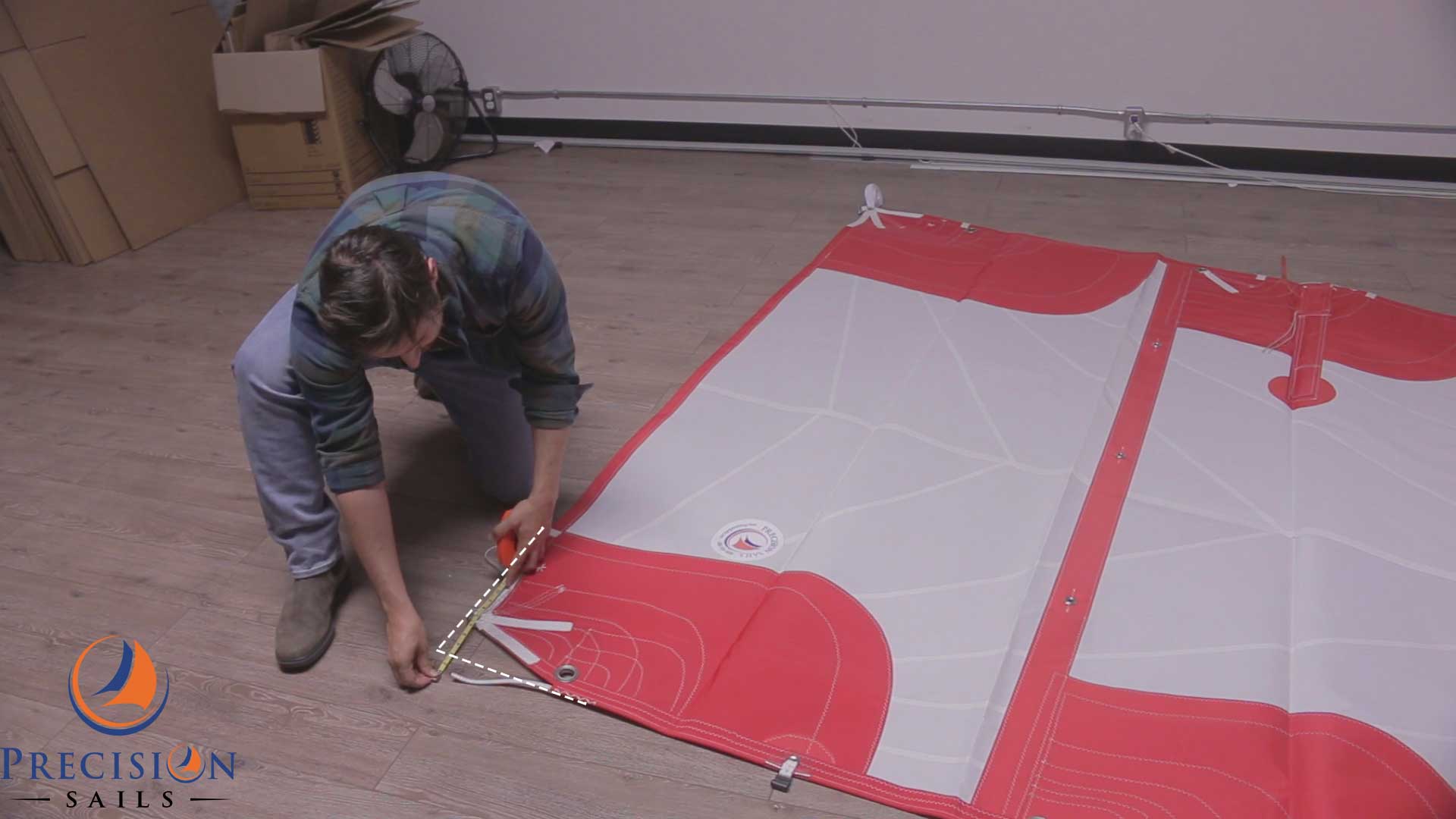What you’ll need
Here is all the information you need in order to take the measurements from your existing Mainsail or Headsail and your tack set-back/set-up. Two people will make the process much faster and will result is better measurements. All together this should only take around 15-20 minutes.
For this how-to you will need:
- Your sails (off the boat)
- Long tape measure, or a Reeled Long Tape measure.
- An open, flat area clear of obstacles.
- Something (or someone) to secure one end of the sail when applying tension.
Remove sails from your boat and tension the corners
Choose a place nearby that has a flat non-obtrusive surface; grass fields and baseball parks work well for this. Make sure that there is nothing on the ground that will mark, scrape or distort your sail before laying it out. When taking these measurements, make sure to put tension on the sail to avoid any wrinkles or folds. You can do this by securing one end of the sail with a screw-driver placed in the ground or by having another person hold the opposite corner. Pulling on the sail in this way recreates similar tension placed on the sail when it is in use and will give the maximum dimension of your current sail. Think about when you are winching your sail and how much force is being applied tension the surface. Apply a firm amount of tension while taking the measurement.

Measure your existing sail’s Luff
Simply place the tape measure at the Head of your sail. (Some tape measures have clips which can be used to hold onto the webbing, or alternately have someone hold the tape measure in place). And then pull it taunt to the Tack corner. Make sure to draw a straight line from the head to the tack with the tape measure and pull the sail as taunt as you can to avoid any wrinkles and folds. Do not adjust for the curve of the sail as older sails can stretch and incorrectly render the dimensions needed. Take a photo of the tape measure at the Tack and record the length on your measurement form.

Measure the Leech
Leaving the tape measure positioned at the head of the sail simply pivot along the foot of the sail and pull the tape taunt from the Head to the Clew corner. Again, avoid adjusting for any curve in the sail and measure a straight line from top to bottom making sure to pull the sail tight. Take another photo of the tape measure at the Clew, record the measurements, and retract the tape measure.

Measure the Foot of your old sail
Simply secure the tape measure at either the Tack or Clew and pull it taunt in a straight line to the other. Avoid the curve of the sail, and make sure to take a photo and record the measurement on the form.


Measuring Tack Setback and Setup
Now in order to measure your Tack set-back/ set-up you will only need your tape measure (preferably a rigid one). While the sail is still laid out go to the Tack and lay the tape along the luff of the sail as if you were extending the edge downward. Draw an imaginary line to the intersection of where the Luff and Foot would meet normally, this is the measurement you need. Similarly, for the Foot lay the tape along the edge and extend it past the Luff to find their intersecting point. The measurement on the Luff side will be your Tack Set-up and the measurement on the Foot side is your Tack Set-back. Record the measurements and don’t forget to take a picture with the tape in place!
And that’s it! You have successfully measured your Leech, Luff, Foot and Tack-Setback/Up.
Need more help?
Check out our measurement videos below for more information:


